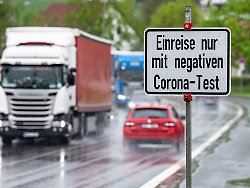Thursday July 29, 2021
Agreement is in place
Entry test is mandatory from Sunday
Shortly before the summer vacation comes to an end for many, the federal government is adopting new entry rules: From August 1, according to a draft, all travelers returning who have not been vaccinated or recovered must present a negative corona test when crossing the border – regardless of whether they are traveling by car or train or by plane.
The general compulsory test when entering Germany should come into force on Sunday. Any concerns within the federal government have been dispelled, ntv learned from those involved. It is now possible that Federal Health Minister Jens Spahn will present the new regulation on Friday and then come into force on August 1st.
The corresponding draft regulation states that it is necessary “to curb the entry of additional infections and to keep the number of infections low in order to be able to further increase the vaccination rates during this period”. And further: “According to current forecasts, the next wave of high numbers of infections to be expected should be delayed as far back as possible.” The draft, which has now apparently been agreed, provides for the regulation to come into force on August 1 and is to be limited to the end of the year.
In principle, according to the draft, in the future all immigrants from the age of six should have a negative test certificate, proof of recovery or proof of a complete vaccination – regardless of where and how they come to Germany. When entering from an area with worrying virus variants, proof of test should always be necessary – proof of vaccination or recovery should not be sufficient.
In general, the evidence should be carried on entry and presented in the event of “spot checks” by the authorities. If you travel with a “carrier” like an airline, the evidence should be presented on request before take-off – this has already been the case for air passengers. In cross-border rail traffic, this should also be possible while driving.
According to the draft, changes are also planned in the classification of regions with higher risk. In future there will only be two categories instead of three: high-risk areas and virus variant areas. The previous level of a “simple” risk area is to be dropped.
.
